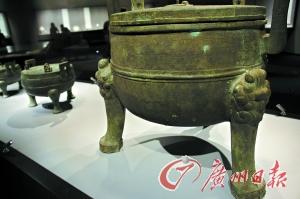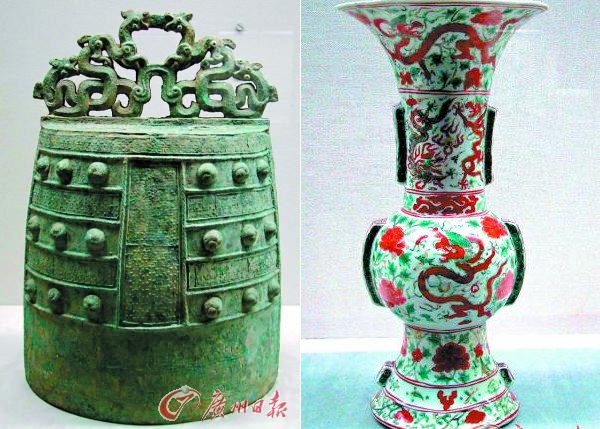
A Chinese relic looted by Japanese aggressors during World War II is displayed at the Tokyo National Museum. (Photo/Guangzhou Daily)
(ECNS) – Japanese aggressors looted some 100,000 precious cultural relics as well as 3 million precious books and manuscripts, alongside at least 6,000 tons of gold from China during World War II, some of which have been labeled "Japan's national treasures" by certain museums, the Guangzhou Daily reported on Thursday. [Special coverage]
Chinese official data shows that Japan seized 1,879 cases containing cultural property, as well as numerous cultural relics from China from 1931 to 1945, while Japan's official statistics put the number of looted Chinese cultural relics at 3.6 million items, the paper reports.
Many of the Chinese cultural relics are at Japanese museums. At Tokyo National Museum, about 10,000 Chinese cultural relics are on display, with 11 labeled as "Japan's national treasures" and another 147 as important cultural property. Tourists are prohibited from taking photos of these "national treasures."
A professor from Kyoto University said China was robbed of several million cultural relics by Japan in the war.
A U.S. scholar also told the Guangzhou Daily that Japan looted at least 6,000 tons of gold from China, using shockingly cruel means, during the Nanjing Massacre period.
Both experts said the Japanese looting was not carried out randomly, but was highly organized and carefully plotted.
The Japanese professor added that Japan's looting of Asian countries involved both economic and cultural property, as well as taking people as prisoners, with the number of forced laborers from China hitting 1 million during each year of World War Two.
Japanese troops also ran opium farms and opium processing plants in Northeast and North China during the war, according to the report.



















































